Il nostro benamato panettone, dolce-simbolo delle feste natalizie, ha un’origine assai divertente. Il panettone, come viene inteso oggi, è una specialità gastronomica recente nella storia dolciaria italiana. Infatti, si dice che fu inventato solo alla fine del XIX secolo a Milano in seguito a un episodio davvero leggendario.
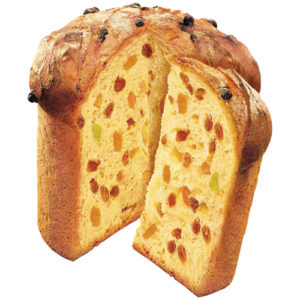 Come augurio di Buon Natale e di Felice Anno Nuovo, ecco il simpaticissimo racconto del famoso “panettone”! C’era una volta un panettiere che si chiamava Toni. Un bel giorno Toni s’innamorò follemente di una certa ragazza contadina di nome Lucia. Ora, Lucia andava al paese tutte le mattine per vendere le uova. Toni, ogni mattina, aspettava l’arrivo di Lucia con ansia ed entusiasmo e poi nel vederla, tanto erano forti i sentimenti che provava per questa fanciulla di campagna che non sapeva mai cosa dire e rimaneva ammutolito. Quanti sguardi d’amore scambiati, quanti sospiri e quante uova rotte proprio perché questo povero diavolo non riusciva a esprimere il suo amore. Finalmente, Toni ebbe una brillante idea: decise di preparare un dolce per la sua adorata Lucia, ma non un dolce qualsiasi, bensì un dolce speciale mai preparato prima di allora!
Come augurio di Buon Natale e di Felice Anno Nuovo, ecco il simpaticissimo racconto del famoso “panettone”! C’era una volta un panettiere che si chiamava Toni. Un bel giorno Toni s’innamorò follemente di una certa ragazza contadina di nome Lucia. Ora, Lucia andava al paese tutte le mattine per vendere le uova. Toni, ogni mattina, aspettava l’arrivo di Lucia con ansia ed entusiasmo e poi nel vederla, tanto erano forti i sentimenti che provava per questa fanciulla di campagna che non sapeva mai cosa dire e rimaneva ammutolito. Quanti sguardi d’amore scambiati, quanti sospiri e quante uova rotte proprio perché questo povero diavolo non riusciva a esprimere il suo amore. Finalmente, Toni ebbe una brillante idea: decise di preparare un dolce per la sua adorata Lucia, ma non un dolce qualsiasi, bensì un dolce speciale mai preparato prima di allora!
Così, Toni preparò un dolce a base di uova, burro e frutta candita, dalla pasta soffice e profumata. Ma Toni, tanto emozionato per l’amore intenso che provava per Lucia e tutto preso dalla lavorazione di questo dono, involontariamente mise una grande quantità di lievito nell’impasto senza accorgersene. Il risultato?… un pane dolce alto, alto, alto proprio a causa dell’esagerata lievitazione.
Ma non “tutto il male viene per nuocere”: lo sbaglio di Toni portò alla scoperta di un dolce davvero gustoso. Infatti, quando presentò il suo “pandolce” a Lucia avvenne un miracolo. Toni si rese conto dello sbaglio troppo tardi e non avendo tempo per ricominciare un’altra ricetta presentò il suo dono a Lucia quasi vergognato del suo lavoro mediocre. Lucia, invece, nel vedere l’apparentemente strano dolce dall’aroma quasi incantevole volle subito assaggiarlo e trovò che era di una squisitezza paradisiaca. A quel punto, improvvisamente Toni riuscì a parlare e subito chiese a Lucia di sposarlo. Vissero felici e contenti e anche ricchi, poiché decisero di vendere l’invenzione di Toni battezzandola “Il Panettone” cioè, il “Pan de Toni”.
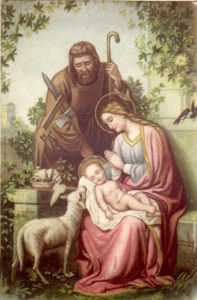
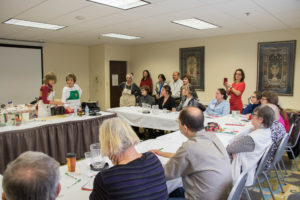
 Come augurio di Buon Natale e di Felice Anno Nuovo, ecco il simpaticissimo racconto del famoso “panettone”! C’era una volta un panettiere che si chiamava Toni. Un bel giorno Toni s’innamorò follemente di una certa ragazza contadina di nome Lucia. Ora, Lucia andava al paese tutte le mattine per vendere le uova. Toni, ogni mattina, aspettava l’arrivo di Lucia con ansia ed entusiasmo e poi nel vederla, tanto erano forti i sentimenti che provava per questa fanciulla di campagna che non sapeva mai cosa dire e rimaneva ammutolito. Quanti sguardi d’amore scambiati, quanti sospiri e quante uova rotte proprio perché questo povero diavolo non riusciva a esprimere il suo amore. Finalmente, Toni ebbe una brillante idea: decise di preparare un dolce per la sua adorata Lucia, ma non un dolce qualsiasi, bensì un dolce speciale mai preparato prima di allora!
Come augurio di Buon Natale e di Felice Anno Nuovo, ecco il simpaticissimo racconto del famoso “panettone”! C’era una volta un panettiere che si chiamava Toni. Un bel giorno Toni s’innamorò follemente di una certa ragazza contadina di nome Lucia. Ora, Lucia andava al paese tutte le mattine per vendere le uova. Toni, ogni mattina, aspettava l’arrivo di Lucia con ansia ed entusiasmo e poi nel vederla, tanto erano forti i sentimenti che provava per questa fanciulla di campagna che non sapeva mai cosa dire e rimaneva ammutolito. Quanti sguardi d’amore scambiati, quanti sospiri e quante uova rotte proprio perché questo povero diavolo non riusciva a esprimere il suo amore. Finalmente, Toni ebbe una brillante idea: decise di preparare un dolce per la sua adorata Lucia, ma non un dolce qualsiasi, bensì un dolce speciale mai preparato prima di allora! The tradition of the seven fishes prepared for meals on Christmas Eve lends itself to a Central and Southern Italian tradition and is not prevalent in the Northern region. Some argue that this may be due to Southerners being a bit more superstitious than their Northern counterparts. Of course, you don’t have to look too far for an explanation of why fish is an obvious choice on Christmas Eve: Catholic rules prohibit the consumption of meat on Christmas Eve.
The tradition of the seven fishes prepared for meals on Christmas Eve lends itself to a Central and Southern Italian tradition and is not prevalent in the Northern region. Some argue that this may be due to Southerners being a bit more superstitious than their Northern counterparts. Of course, you don’t have to look too far for an explanation of why fish is an obvious choice on Christmas Eve: Catholic rules prohibit the consumption of meat on Christmas Eve. To discover the apex of chestnut culinary creativity, don’t miss the mid-November Festa del Vino e delle Castagne (Wine and Chestnuts Festival) of San Martino in Colle, a minuscule castle-village near Perugia.
To discover the apex of chestnut culinary creativity, don’t miss the mid-November Festa del Vino e delle Castagne (Wine and Chestnuts Festival) of San Martino in Colle, a minuscule castle-village near Perugia.

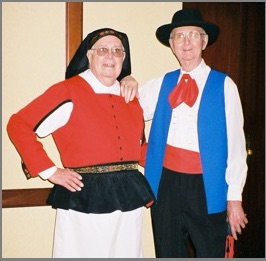
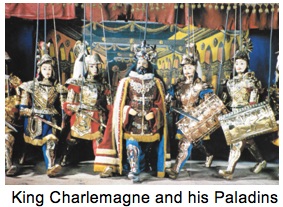 and crest. Knights are well-equipped: from the helmet on the head, and iron breastplate, the sword in the right hand … the shield on the left arm. Only the King, the Ladies, and the Pages are without armor.
and crest. Knights are well-equipped: from the helmet on the head, and iron breastplate, the sword in the right hand … the shield on the left arm. Only the King, the Ladies, and the Pages are without armor.
 history and production of bomboniere and then used a variety of materials to create bomboniere of their own.
history and production of bomboniere and then used a variety of materials to create bomboniere of their own.